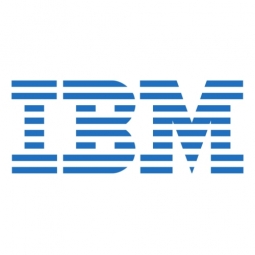Download PDF
Zend accelerates, simplifies PHP development
Technology Category
- Platform as a Service (PaaS) - Application Development Platforms
Applicable Industries
- Software
Applicable Functions
- Product Research & Development
Use Cases
- Manufacturing System Automation
Services
- Software Design & Engineering Services
- System Integration
The Challenge
Zend Technologies, a major contributor to the PHP open source community, needed to keep pace with emerging trends such as mobility, agile development, application lifecycle management and continuous delivery. The company needed to provide the right tools to the worldwide community of PHP developers. The challenge was to support enterprise-class capabilities from end to end, including mobile, compliance and security. The pace of business required developers to show results fast across a variety of devices without compromising quality or security.
About The Customer
Zend Technologies is a leading company in the PHP open source community. The company contributes to the advancement of PHP while making it easier to develop enterprise-class PHP applications through its Zend Server product. With more than 80 percent of websites running PHP today, Zend has a uniquely informed view into the world of application development. The company's customers are increasingly managing the application not just while it is in development but all the way through production, release, versioning, control and integration with additional infrastructure underneath the application.
The Solution
Zend Technologies adopted IBM PureApplication System and IBM PureApplication Service on SoftLayer to simplify and speed up enterprise-class PHP development. The IBM PureApplication System allowed Zend developers to quickly focus on the work that matters by rapidly accessing resources in an off-premises or on-premises cloud environment and using patterns to simplify and automate tasks throughout the development lifecycle. The IBM PureApplication solutions also supported a hybrid cloud environment, giving developers the ability to adapt to changes in demand without incurring unnecessary expense.
Operational Impact
Related Case Studies.
Case Study
Factor-y S.r.l. – Establishes a cost-effective, security-rich development environment with SoftLayer technology
Factor-y S.r.l., a web portal developer, was faced with the challenge of migrating its development infrastructure to a reliable cloud services provider with highly responsive technical support. The company needed a solution that would not only provide a secure and reliable environment but also support its expansion by providing resources to create and deliver innovative offerings.
Case Study
Darwin Ecosystem: Accelerating discovery and insight through cutting-edge big data and cognitive technologies
Darwin Ecosystem was founded with a unique vision of harnessing chaos theory mathematics to uncover previously hidden connections in unstructured data. The company’s algorithms can look at all the data generated by any source (such as news, RSS feeds and Twitter), and analyze how a specific set of concepts within that data are evolving over time. This is particularly valuable in situations such as business and competitive intelligence, social research, brand monitoring, legal discovery, risk mitigation and even law enforcement. A common problem in these areas is that a regular web search will only turn up the all-time most popular answers to a given question – but what the expert researcher is actually interested in is the moment-tomoment evolution of the data available on that topic. Darwin’s algorithm is computationally intensive, and the sources of data it correlates can be vast. To bring its benefits to a larger commercial audience, Darwin needed to find a way to make it scale.
Case Study
Delivering modern data protection with cloud scale backup from Cobalt Iron and IBM
Organizations are struggling to modernize their legacy data protection environments in the face of growing demands around new infrastructure, new applications, and budget consolidation. Virtualization and modern application development processes have significantly outgrown legacy backup architectures. In response, infrastructure teams have created multiple backup solution types to handle the varying SLAs (performance, scale, cost) required by their business sponsors. However, the sheer number and variety of solutions in this uncontrolled expansion creates huge amounts of work, threatening to overwhelm the IT team in many organizations. Today, developers may add new applications and virtual server instances by the hundreds per day without accounting for the restrictions of the existing backup infrastructure. They leverage the cloud for immediate compute and storage resources, yet rarely communicate succinctly with corporate IT to ensure that the appropriate data protection services are in place.
Case Study
Achieving near limitless scalability and flexibility with data in the cloud
Web-based publishing platform SpaceCraft found that as its client base grew, it was spending an increasing amount of time managing its databases, distracting its focus from product innovation. As its user base rapidly expanded, data volumes at SpaceCraft began to rise dramatically. Along with their main focus on maintaining and further developing a great platform for web publishing, the SpaceCraft team had the added pressure of managing the increasing quantities of data while ensuring ongoing high performance for clients.
Case Study
nViso SA – Delivers emotion recognition solutions worldwide with a scalable SoftLayer hosting solution
nViso SA, a company that provides emotion recognition solutions, was in need of a high-performance cloud hosting infrastructure. The company wanted to extend its services to a global customer base. The challenge was to find a solution that could handle the demands of their growing customer base and the need for high performance and reliability.
Case Study
Infosys achieves a 5–7 percent effort reduction across projects
Infosys, a global leader in consulting, technology, and outsourcing solutions, was facing significant challenges in application development and maintenance due to its distributed teams, changing business priorities and the need to stay in alignment with customer needs. The company used a mix of open source, home-grown and third-party applications to support application development projects. However, challenges resulting from distributed teams using manual processes increased as the company grew. It became more and more important for Infosys to execute its projects efficiently, so they could improve quality, reduce defects and minimize delays.





